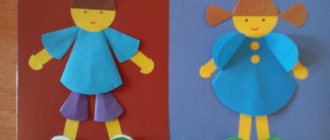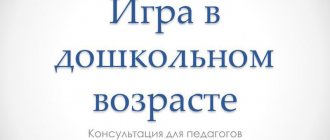↑ Types of activities
Depending on the subject, activity can be individual
or
collective
.
By nature: reproductive
(repeating what has already been achieved) and
productive
- creative (a type of activity that generates something qualitatively new, never existing before).
According to social norms: legal - illegal, moral - immoral
.
In relation to social progress: progressive - reactionary, creative - destructive.
In the sphere of public life: economic, social, political, spiritual.
According to the characteristics of the manifestation of human activity: external - internal.
The main types of activities that ensure the existence of a person and his formation as an individual are communication, play, learning and work
.
https://youtu.be/nyYtWEC2teA
↑ Communication as a type of activity
Communication
- a type of activity during which information is transferred from one individual to another, thoughts, feelings and emotions are exchanged.
It is often expanded to include the exchange of material items. This broader exchange constitutes communication.
Communication
— communication, the transfer of information from person to person, a form of interaction between people.
Communication structure:
Subjects
- those between whom communication takes place (individuals, groups, communities, humanity as a whole)
Target
- this is what a person needs to communicate for
Content
- these are ideas, emotions that are transmitted in interpersonal contacts from one to another
Facilities
- these are methods of transmission (using the senses, texts, drawings, diagrams, radio-video equipment, the Internet, etc.)
Same thing again
Communication
is a process of interaction between people, as a result of which information, emotions, and moods are transferred.
Subjects
: Really existing partners; illusory partners (they are assigned qualities of a subject of communication that are unusual for them, for example, talking with a pet); imaginary partners (talk to oneself, with an artistic image)
Goals
(that for which a person has a need for interpersonal relationships): transfer and receipt of knowledge; coordination of reasonable actions of people; organization of joint activities of people; establishing and clarifying interpersonal relationships, etc.
Content
(information transmitted in the process of communication): knowledge, experience, skills, emotions, feelings
Communication means
(methods of transmission, processing and decoding of information):
- sense organs (vision, hearing, smell, touch);
- oral speech;
- written language (drawings, signs, images);
- technical means (radio, television, computer)
functions
:
- communicative
(implementation of the relationship between people at the level of individual, group and public interaction); - cognitive
(obtaining new information); - socialization
(formation of interaction skills in society); - psychological
(emotional support);
Types of communication
| Direct - personal contact, communication requires visual perception of each other | Business (formal) - communication in the professional sphere, relies more on document flow. | Verbal - communication through speech. | Interpersonal - communication between two people. |
| Indirect - communication through other people. | Personal (informal) - conversation on any topic, communication between friends and loved ones. | Nonverbal - communication through facial expressions, gestures, postures. | Group - communication between three or more people. |
↑ Game as a type of activity
A game
- this is a type of activity that is aimed at satisfying spiritual needs and the goal of which is not the production of a material product, but the process itself - relaxation, entertainment.
Characteristic features of the game:
- Occurs in a conditional situation, which, as a rule, changes quickly.
- Certain items are used during the game
- Aimed at satisfying the interests of its participants
- Promotes personality development, enriches it, equips it with the necessary skills.
Game theory in history
Game as a specific form of human interaction with the outside world began to be studied back in antiquity. The game is dedicated to their scientific works, like philosophers such as Plato, Aristotle, Heraclitus.
Greek philosophers viewed play not only from a social, but also from a political and cultural point of view. They determined its educational, aesthetic and ethical value.
Plato considered play to be one of the useful activities. Reflecting on play in his project of an ideal state, Plato comes to the conclusion that play is a human being, albeit not an autonomous, subordinate being, play is a worthy occupation for a person. “Man,” writes Plato in his “Laws,” “is a kind of invented plaything of God, and in essence this has become his best goal...” A person should live by playing '...'. What kind of game is it? Sacrifices, songs, dances to win the favor of the gods by playing and living in accordance with the qualities of their nature, for people are mostly infants and have little to do with the truth.”
Aristotle considered play to be the most important element in raising children, believing that it is through play that a child learns about the world and improves his skills in a free manner. Aristotle did not connect play with all forms of human activity, as Plato did, but viewed it as entertainment.
Aristotle noted that word games develop intelligence.
The Roman philosopher Quintilian also noted the benefits of games for learning. In his treatise “The Education of the Orator,” he spoke about the benefits of games in teaching reading.
Thus, outstanding philosophers of antiquity (Plato, Aristotle, Quintilian and others) defined play as a means of aesthetic, intellectual and physical education of a child. Therefore, in ancient times, games were used as a teaching method.
The Middle Ages were characterized by a negative attitude towards play, which made it almost impossible for the human mind to focus on the study of this activity. It was in the Middle Ages in Western Europe that the so-called dramatization of games arose as a means of learning Latin and as a means of education. Already in the 13th century, in some abbeys, schoolchildren took part in theatrical performances: they acted out mysteries in Latin.
The Renaissance marked the return of the play. Schools are beginning to actively use the play as a teaching method.
In the 16th and 17th centuries, Renaissance ideas about the effectiveness of the game method in teaching continued to live on. In the mid-16th century, the French humanist philosopher Michel Montaigne published his essay “Essay”. Montaigne recognizes the importance of play in the upbringing of children, arguing that play and physical exercise are necessary before any method of learning and should play an important role in the upbringing and education of the child. “As a child, I was instilled with an aversion to the ugly tricks and tricks used in games (and indeed, it should be noted that for children, games are not toys, but the most serious things).”
The English philosopher John Locke developed game theory further. The educational ideas of the English Enlightenment played an important role in the development of pedagogy in the 18th and 19th centuries. He theoretically substantiated the organization of child development in his work “Thoughts on Education” (1693). Locke's views on play were developed by F. Froebel, who believed that by watching a child play, one can learn about his character and inclinations.
In the last third of the 19th century, interest in gaming activities increased, and the first scientific theories appeared. Play is seen as a means of developing skills and abilities necessary for psychophysical and personal development. It is through play that a child gets to know society. Thus, play is seen as a way to develop learning ability.
↑ Labor as a type of activity
Work
is a human activity aimed at obtaining a practically useful result, which makes it possible to satisfy one’s needs.
In the process of labor activity, a person produces the material and spiritual values he needs. Unlike study and play, work requires a person to have certain training or qualifications,
for example: a miner cannot perform a surgical operation.
Qualification -
the level of knowledge, abilities, skills and competence that characterizes readiness to perform a certain type of professional activity.
Characteristic features of work:
- Feasibility
- Focus on achieving programmed expected results
- Availability of skills, abilities, knowledge.
- Practical usefulness
- Availability of result
- Personal development
- Transformation of the external human environment
What is a game for children?
Playing for a child is not just entertainment or a way to spend free time, it is a necessary condition for the child’s mental and physical development. The game performs several functions. Education and development. ... Thus, games contribute to the cognitive and physical development of the child.
Interesting materials:
When is Chopin's birthday? When is Andrei Petrov's birthday? When is Guardian Angel's birthday? When is Dima Dmitrenko's birthday? When is Eugene's birthday? When is Kim Seokjin's birthday? When is Mabe Baby's birthday? When is Alena Venum's boyfriend's birthday? When is Svetlana's Day in February? When is medical examination 2021?
↑ Material and spiritual activity
Based on objects and results, activities are divided into material and spiritual.
Material (practical) activities
associated with practice, creating something new or changing the old order of things.
Material activity, in turn, is divided into two main groups: material-production and social-transformative.
Material and production
activity represents the creation of material wealth, the enrichment of the culture of humanity as a whole. For example, construction, factory production, crafts.
Social transformative activities
associated with changes in society. This type of activity includes the publication of new legislative acts and implementation of reforms.
Spiritual activity
is a process associated with intelligence and creativity, aimed at the spiritual development of the world.
It includes cognitive, value-oriented and prognostic activities.
Cognitive (educational and cognitive)
activities are associated with obtaining new knowledge about the world, events and patterns.
The establishment and formation of spiritual values in society or a value-based attitude towards things is a value-oriented activity
.
Prognostic activity
- making forecasts or plans for the future, foreseeing the results of one’s actions or future events.
The results of spiritual activity are new ideas, values, ideas, which are subsequently embodied in philosophical concepts, scientific theories, works of art, moral, religious, legal and other norms.
Historical forms of spiritual activity are religion, morality, art, science, philosophy, law, political ideology, and spiritual production
- this is the result of activity in these areas, namely spiritual values and benefits.
Spiritual production -
production of spiritual values, those. ideas, ideas, scientific knowledge, ideals, as well as the entire system of human activity associated with this process.
Activities may also vary in nature. Thus, they distinguish the conscious
(conscious setting of goals and their achievement),
productive
(creation of a useful product),
instrumental
(creation of tools),
transformative
(changing the environment, society, self-improvement) and
social
(interaction with people)
nature of activity
.
Concepts of game and pedagogical game
It is necessary to distinguish between the concepts of a game and an educational game. Educational games have a specific feature: they have a specific learning goal and a corresponding result. Educational games have an educational and cognitive focus.
In accordance with the nature of the pedagogical process, the following groups of games are distinguished:
- education, training, control and generalization;
- cognitive, educational, developmental;
- reproductive, productive and creative play;
- communicative, diagnostic, career guidance, psychotechnical, etc.
According to the nature of the game modes:
- Subject-oriented;
- Actions;
- Role-playing;
- Operational;
- Imitation games;
- Dramatization games;
- The games are differentiated by topic in all school subjects.
Educational games have a clear goal. Pedagogical goals are very diverse. The following target orientations are defined:
- Didactics: expansion of perception, cognitive activity; application of knowledge in practical activities; development of certain skills and abilities necessary in practical activities; development of general educational skills and abilities; development of readiness for work.
- Education: nurturing independence, will, development of certain attitudes, views, moral, aesthetic and behavioral forms; cooperation, collectivism, sociability, sociability;
- Development of: attention, memory, speech, thinking, comparison, contrast, the ability to find analogies, imagination, fantasy, creativity, empathy, reflection, the ability to find optimal solutions; development of motivation for learning activities.
- Socialization: the study of the norms and values of society; adaptation to environmental conditions; stress management, self-regulation; communication training; psychotherapy.
- Game activity based on basic human needs. Regardless of age, a person needs self-expression, self-actualization and self-realization. In play, a person strives to express these qualities.
The game refers to one of the forms of psychogenic behavior, i.e. A person’s actions in the game are determined by his internal state of mind, internal needs and abilities.
The game also performs the function of socialization, thanks to which the child acquires social attitudes, principles, stereotypes and values accepted in society.
As an educational method, the game can be used for all ages, but it has its own specific characteristics. Play is the leading activity for preschool children. Therefore, classes in preschool institutions are most often based on game pedagogy.
It is in preschool age that the ability to learn develops. Play is the most effective method. By the age of three, the child begins to understand and express his feelings. The child begins to integrate into the social environment.
When teaching children of primary school age, age characteristics are taken into account. Children are easily involved in any activity and know how to work in groups.
Adolescence is characterized by the need for self-expression, creating your own world and a vivid imagination.
In high school, the emphasis is on self-expression to society. Gaming styles are more focused on speaking out, defending your own point of view.




